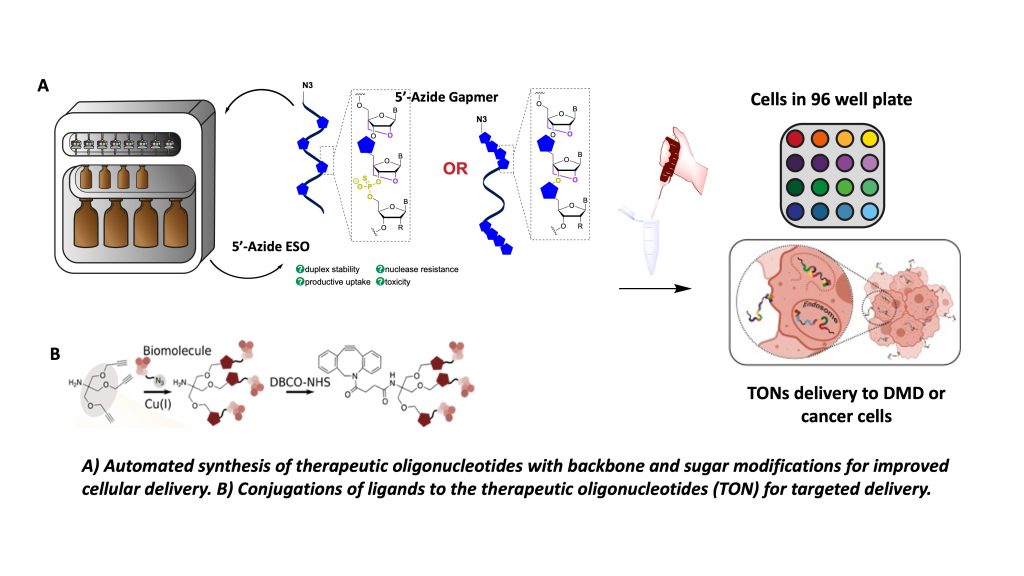Project No. 2419
PRIORITY STANDARD PROJECT
Primary Supervisor
Dr Afaf El-Sagheer – University of Southampton
Co-Supervisor(s)
Prof Dariusz C. Gorecki – University of Portsmouth
Summary
Therapeutic oligonucleotides (TONs) have great potential to treat previously undruggable targets at the transcript level by controling mRNA expression or splicing.
Yet, TONs clinical efficacy depends on stability, delivery to, and internalization by target cells. Achieving efficient oligonucleotide delivery, particularly to extrahepatic (non-liver) tissues, remains one of the most difficult challenges to overcome, limiting progress in the field. Improvements in cellular delivery will be truly transformative to mark a step-change in the field of therapeutics for oncological, genetic, neurological and other hard-to-treat diseases. Our recent proof of principle results suggests that combining the phosphorothioate (PS) and uncharged LNA-Amide backbones greatly enhanced cell uptake (doi.org/10.1038/s41467-022-31636-2). We propose to evaluate the hypothesis of using a more hydrophobic neutral backbones including click chemistry {Nobel prize award for Chemistry 2022 which we pioneered in the construction of modified genes and mRNA (Nobel prize award for Medicine 2023)}. We will evaluate delivery and functionality of this new therapeutic modality via targeting the lncRNA MALAT1 Gapmer in multiple myeloma, and exon skipping in Duchenne muscular dystrophy (DMD) cells. We will determine the optimum number of groups that govern productive uptake of functional TONs. We will also determine the position that reduces the toxicity keeping the efficacy level the same, then compare neutral and charged backbones versus PS(-Ve) in improving delivery and reducing toxicity. Once we demonstrate the generality of the improvement of naked oligonucleotide delivery (gymnotic delivery) using different backbones, we will use photoaffinity proteomics studies, fluorescence microscopy and in vivo biodistribution to determine TONs’ delivery efficiency, and toxicity. Notably, the method is applicable to all TON-targetable diseases. Moreover, this chemistry has the potential to be automated and carried out at large scale for clinical therapeutic oligonucleotide development.
The expected outcome: highly effective and safe novel TONs for gymnotic delivery, multidisciplinary research training for the PhD student.
Chemistry, Biochemistry or Biology background is required

